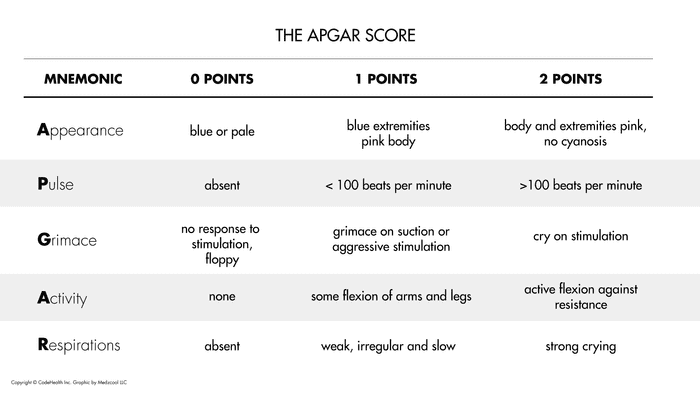NUCLEOTYPE
The Apgar Score
January 07, 2020
The Apgar score was invented in 1952 as a scoring system used to assess the health of the newborn and identify those who require emergent attention. It is a scoring system ranging from zero (0) to 10 and is calculated by evaluating the newborn based on 5 criteria. You can remember the 5 criteria by remembering APGAR:
- Appearance
- Pulse
- Grimace
- Activity
- Respirations
Each of these 5 criteria can be allocated a score from zero to 2, and then the sum of these criteria will give you the Apgar score.
Interpretation
As the health care provider, you will calculate APGAR scores at 1 and 5 minutes after birth. If the score is low, you repeat the score later.
A score of 7 and above is generally normal. Scores less than 7 are low and suggest distress of the newborn that requires some medication intervention (e.g. suction or stimulation).
Although the Apgar score is not used to determine morbidity or mortality, lower scores typically are thought to correlate with more severe outcomes.
For example, scores of 3 that are persistent can indicate long-term sequelae such as neurological damage. However keep in mind, the purpose of the Apgar score is to determine when emergent interventions are necessary.
References
- A proposal for a new method of evaluation of the newborn infant. APGAR, V. Curr Res Anesth Analg. 1953 Jul-Aug;32(4):260-7.
